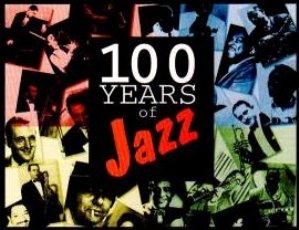100 Years of Jazz - Disc 10: Avantgarde - Free Jazz (1999)
100 Years of Jazz - Disc 10: Avantgarde - Free Jazz (1999)

1. Lennie Tristano Sextet – Intuition (02:28) 2. Miles Davis – Splatch (11:28) 3. Pat Metheny Trio – Bright Size Life (04:45) 4. Archie Shepp Group – There's a Trumpet in My Soul (Part 1) (10:28) 5. Cecil Taylor – Jitney No. 2 (03:33) 6. Keith Jarrett – Ritooria (05:52) 7. Jan Garbarek Group – Irr (07:18) 8. Dollar Brand Trio – Tintiyana (04:21) 9. Albert Ayler – Spirits (06:36) 10. Sun Ra Arkestra – Intergalactic Motion (08:58) 11. Art Ensemble of Chicago – Old Time South Side Street Dance (05:11)
Avant-Garde Jazz differs from free jazz in that it has more structure in the ensembles (more of a "game plan") although the individual improvisations are generally just as free of conventional rules. Obviously there is a lot of overlap between free jazz and avant-garde jazz; most players in one idiom often play in the other "style" too. In the best avant-garde performances it is difficult to tell when compositions end and improvisations begin; the goal is to have the solos be an outgrowth of the arrangement. As with free jazz, the avant-garde came of age in the 1960s and has continued almost unnoticed as a menacing force in the jazz underground, scorned by the mainstream that it influences. Among its founders in the mid-to-late '50s were pianist Cecil Taylor, altoist Ornette Coleman and keyboardist-bandleader Sun Ra. John Coltrane became the avant-garde's most popular (and influential) figure, and from the mid-'60s on, the avant-garde innovators made a major impact on jazz, helping to push the music beyond bebop. ---allmusic.com
Dixieland and swing stylists improvise melodically, and bop, cool, and hard bop players follow chord structures in their solos. Free Jazz was a radical departure from past styles, for typically after playing a quick theme, the soloist does not have to follow any progression or structure and can go in any unpredictable direction. When Ornette Coleman largely introduced free jazz to New York audiences (although Cecil Taylor had preceded him with less publicity), many bop musicians and fans debated about whether what was being played would even qualify as music; the radicals had become conservatives in less than 15 years. Free jazz, which overlaps with the avant garde (the latter can use arrangements and sometimes fairly tight frameworks), remains a controversial and mostly underground style, influencing the modern mainstream while often being ignored. Having dispensed with many of the rules as far as pitch, rhythm, and development are concerned (although it need not be atonal or lack a steady pulse to be free jazz), the success of a free jazz performance can be measured by the musicianship and imagination of the performers, how colorful the music is, and whether it seems logical or merely random. ---allmusic.com
download (mp3 @320 kbs):
yandex mediafire ulozto gett bayfiles








